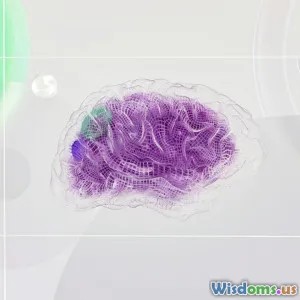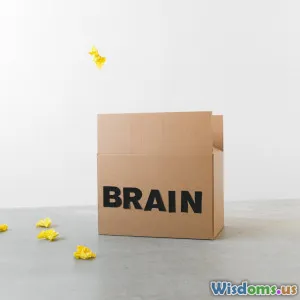
Harnessing Dreams for Creative Solutions
8 min read Explore how dreams can unlock creative solutions through brain science insights and practical techniques. (0 Reviews)
Harnessing Dreams for Creative Solutions
Dreams have fascinated humanity for millennia, viewed alternately as mystical visions or mere night-time fantasies. Yet, what if these nightly mental journeys hold tangible keys to solving problems and sparking creativity? Thanks to advancing brain science research, we now understand that dreams tap into complex cognitive processes that can unleash breakthrough ideas. This article explores how dreaming influences creative cognition, shares remarkable examples of dreams transforming innovations, and offers practical guidance on harnessing dreams for creative solutions.
The Science Behind Dreams and Creativity
Dreaming primarily occurs during Rapid Eye Movement (REM) sleep, a unique brain state characterized by heightened neural activity in areas associated with emotion, memory, and pattern recognition. The brain’s prefrontal cortex — responsible for logical analysis — is less active, allowing freer association and novel combinations of ideas.
Neuroscientific research shows that during REM sleep, connections between distant brain regions strengthen, enabling cross-talk between normally separate knowledge zones. This recombination is essential for creative insight because it breaks habitual thinking and fosters original connections.
A landmark 2019 study published in Nature Communications demonstrated that participants solved a creative task better after REM sleep compared to non-REM sleep or no sleep. This suggests that the dreaming phase enhances incubation and problem restructuring needed for creativity.
Emotional and Cognitive Integration
Dreams engage the limbic system—our emotional brain—in lively ways. Emotions help prioritize memories and ideas in dreams, imprinting stronger relevance. This emotional-cognitive interplay can guide creative breakthroughs by linking feelings with symbolic imagery and abstract problem elements.
Historical and Contemporary Examples of Dreams Inspiring Innovation
The creative potential of dreams is not merely theoretical; history and modern-day anecdote reveal inspiring cases where dream content catalyzed groundbreaking innovations.
Kekulé’s Benzene Ring
In the 19th century, chemist August Kekulé famously dreamt of a snake biting its own tail, which inspired him to conceptualize the benzene molecule’s ring structure. This vision directly influenced organic chemistry, redefining molecular understanding.
Einstein and Relativity
Albert Einstein reportedly credited his dreams for helping him visualize the theory of relativity. His mind’s symbolic exploration during sleep allowed him to approach physics problems from new angles.
The Sewing Machine and Tesla’s Inventions
Elias Howe conceived the sewing machine needle’s mechanism after a vivid dream depicting hunters with spear eyes.
Nikola Tesla’s diaries recount dreams that elucidated complex inventions and electrical concepts, reinforcing sleep’s role in creative ideation.
These examples illustrate a powerful pattern: when consciously recalled and reflected upon, some dreams offer solutions or inspirations unattainable during daytime thought alone.
Techniques to Harness Dreams for Creative Problem-Solving
Unlocking your dream potential requires intentional habits and strategies.
1. Dream Journaling
Keep a notebook by your bed to immediately jot down dream details upon waking. This practice strengthens dream recall and captures fleeting impressions.
Tip: Even noting emotions or fragments offers clues to subconscious processing.
2. Set a Dream Intention
Before sleep, consciously frame a question or problem you wish to explore. Mental priming can guide your dreams to focus on relevant themes.
3. Practice Mindful Relaxation
Engage in meditative or relaxation exercises before sleep to increase dream vividness and clarity. Techniques such as deep breathing or progressive muscle relaxation enhance REM quality.
4. Utilize Hypnagogic States
The transitional phase from wakefulness to sleep—hypnagogia—can yield creative imagery and spontaneous insights. Focusing awareness during this state may surface innovative ideas.
5. Interpret Dreams Creatively
Rather than rigid literal interpretations, view dreams as metaphorical narratives that provide novel perspectives. Associative thinking can reveal breakthrough angles.
6. Share and Collaborate
Discussing dreams with peers can spark collective creativity. Others may discern patterns or suggestions you overlooked.
Applied Benefits: From Art to Problem-Solving
Dream-inspired creativity spans diverse fields:
-
Art and Writing: Many creative artists report dreams fueling symbolism and narrative scenes, pushing creative boundaries.
-
Scientific Inquiry: Problems resistant to rational solutions benefit from incubation during sleep, leading to "aha" moments upon waking.
-
Entrepreneurship: Novel business ideas and solutions may emerge from dream symbolism merged with waking analysis.
-
Technology and Design: Creators use dream imagery to inspire forms, functions, and user experiences unfamiliar in routine cognition.
Conclusion: Dream as a Natural Incubator for Creativity
Dreams exist not only as enigmatic night experiences but as potent incubators of creative thought deeply rooted in brain science mechanisms. By embracing the dreaming mind—cultivating awareness, improving recall, and intentionally engaging with dream narratives—individuals and teams can unlock a wellspring of innovative solutions beyond traditional waking methods.
As neuroscientist Matthew Walker notes in his book Why We Sleep, the dreaming brain is unparalleled in synthesizing experiences into new knowledge, confirming what dreamers have always suspected: in dreams lies the power to imagine the impossible and manifest creative breakthroughs.
So tonight, before closing your eyes, dare to invite your subconscious to contribute its mysteries. Your next big idea might just be a dream away.
References
- Walker, M. (2017). Why We Sleep: Unlocking the Power of Sleep and Dreams. Scribner.
- Cai, D. J., Mednick, S. A., Harrison, E. M., Kanady, J. C., & Mednick, S. C. (2009). REM, not incubation, improves creativity by priming associative networks. Proceedings of the National Academy of Sciences, 106(25), 10130-10134.
- Nature Communications, 2019, research on REM sleep and creative problem solving.
Unlock the dreamworld as a creative partner—not just a mystery.
Rate the Post
User Reviews
Popular Posts




















